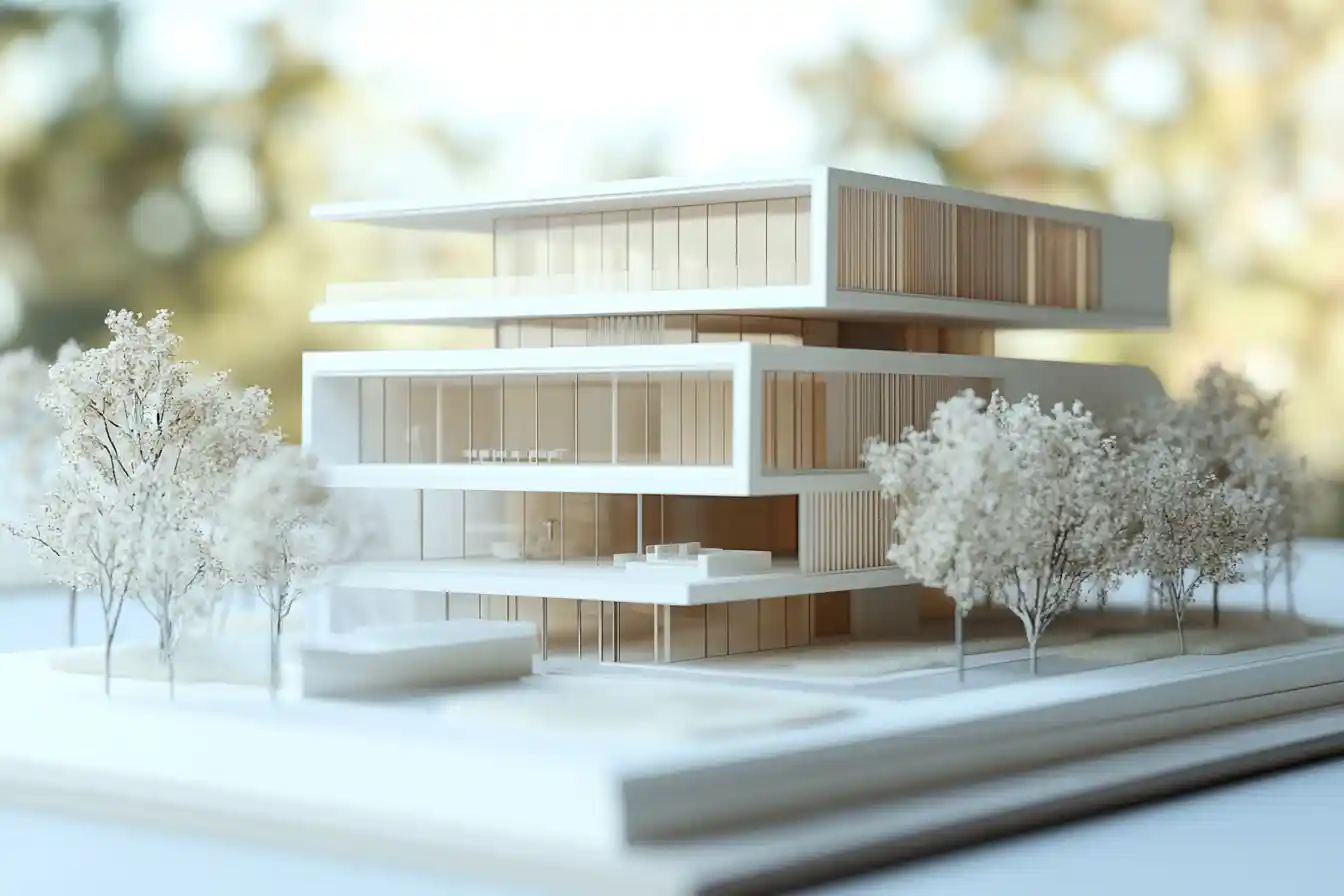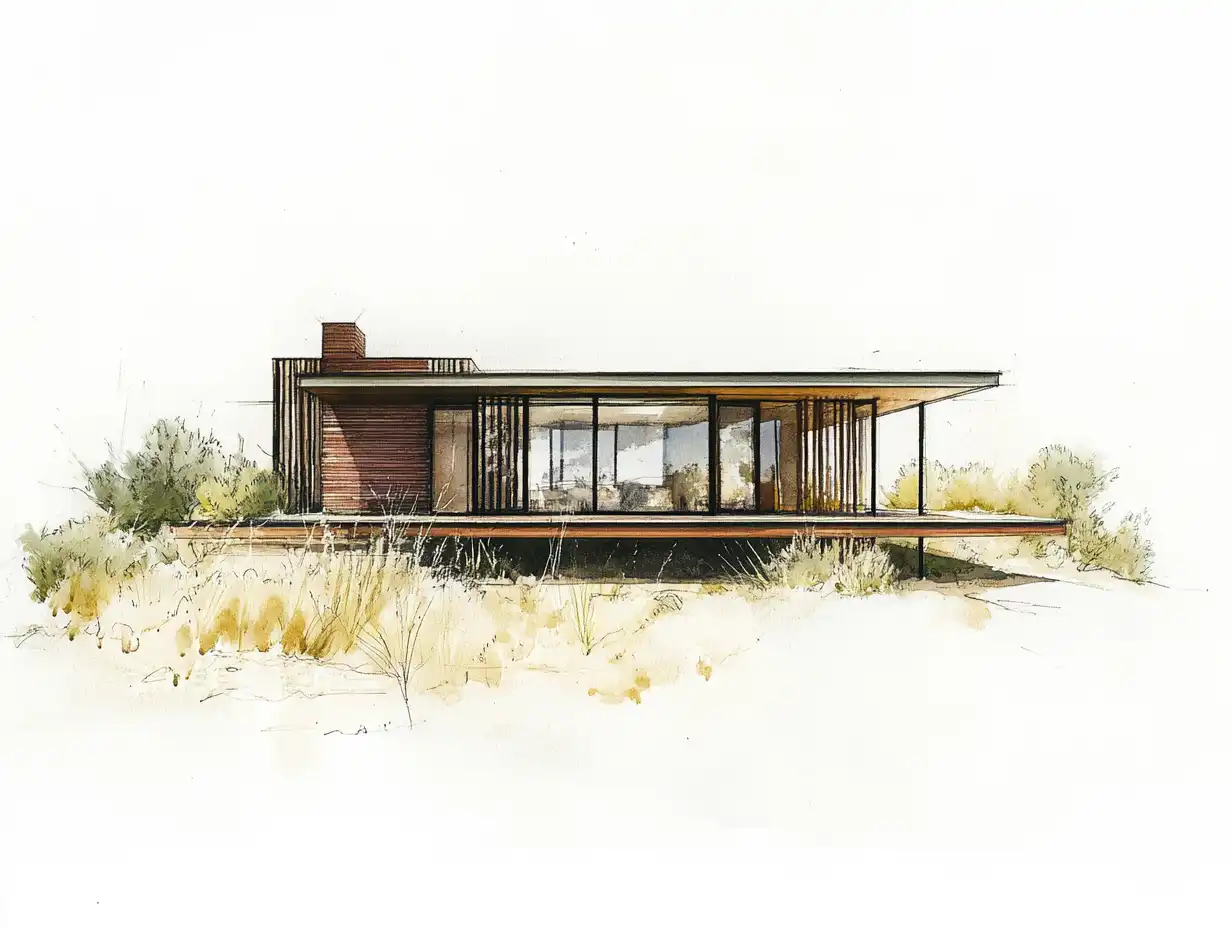In architectural presentations, it is important to note that while color can greatly enhance presentations, it should be used thoughtfully and purposefully. The selection and application of colors should align with the project’s design intent and consider the preferences and requirements of the target audience. The use of color in architectural presentation boards serves several important purposes. Below are some key reasons why color is important in architectural presentations.
Visual Appeal
Color can enhance the visual appeal of architectural presentation boards by making them more vibrant and engaging. A well-chosen color scheme can captivate the viewer’s attention and create a positive first impression.
Communication and Clarity
Color helps to communicate and convey information effectively. Different colors can be used to differentiate various elements within the architectural design, such as walls, floors, furniture, and landscaping. This clarity aids in understanding the design intent and spatial organization.
Mood and Atmosphere
Color has a significant impact on the mood and atmosphere of a space. By using specific color palettes, architects can evoke certain emotions or set a desired tone. For example, warm colors like red and orange can create a sense of energy and vibrancy, while cool colors like blue and green can evoke a calm and serene ambiance.
Material Representation
Color can be used to represent different materials and finishes in architectural presentations. By accurately depicting the colors of materials like wood, stone, metal, or fabric, architects can give clients and stakeholders a better sense of how the finished project will look and feel.
Contextual Integration
Architectural presentations often include context, such as surrounding buildings, landscapes, or urban environments. By incorporating colors that reflect the actual surroundings, the presentation can effectively demonstrate how the proposed design integrates with the existing context.

Hierarchy and Emphasis
Color can be used to establish a hierarchy of information and emphasize specific design elements. By employing contrasting colors or using brighter hues for focal points, architects can guide the viewer’s attention and highlight key features or concepts.
Branding and Identity
For architectural firms or developers, color can play a role in representing their brand identity. Consistent use of specific colors across various presentation materials helps reinforce the brand and create a recognizable visual identity.

Different colors can have varying impacts on individuals, as color perception can be subjective and influenced by cultural and personal factors. However, certain colors are commonly associated with positive effects on the audience. We can say that the impact of colors can vary among individuals and cultural contexts. It’s important to consider the target audience, the specific message or mood you want to convey, and the overall design intent when selecting colors for architectural presentations.
- Blue is often associated with calmness, serenity, and stability. It can create a sense of trust and reliability, making it suitable for conveying a sense of professionalism and competence.
- Green is associated with nature, growth, and harmony. It can evoke feelings of relaxation, balance, and environmental sustainability. Green is often used in presentations related to eco-friendly or sustainable designs.
- Yellow is a vibrant and energetic color that can convey optimism, happiness, and creativity. It can draw attention and create a sense of enthusiasm. However, it is essential to use yellow in moderation as excessive use may cause visual strain.

- Orange is an energetic and warm color that can stimulate feelings of enthusiasm, warmth, and excitement. It can be used to create a sense of vitality and draw attention to specific elements.
- Purple is often associated with luxury, creativity, and spirituality. It can convey a sense of elegance and sophistication, making it suitable for presentations related to high-end designs or artistic concepts.
- White is associated with purity, simplicity, and cleanliness. It can create a sense of spaciousness and simplicity, allowing the focus to be on the architectural elements and details.
- Neutral colors like gray, beige, and taupe can create a sense of balance, timelessness, and sophistication. They serve as a backdrop for other colors and can help highlight important design elements.
- 3D rendering colors for architects
- Architectural Boards
- architectural color palettes
- Architectural Jury Presentation
- Architectural Presentation
- Architectural presentation colors
- architectural presentation design
- architectural presentation software
- Architectural Presentation Templates
- architectural rendering colors
- architecture and color schemes
- best colors for architectural visuals
- color contrast in presentations
- color harmony in architectural projects
- color psychology in architecture
- color selection for architectural presentations
- color theory for architects
- color trends in architecture
- colors in architecture
- digital presentations for architects
- Presentation Board Tips
- Presentation Boards
- presentation design for architects
- Presentation Styles
- Presentation Templates
- using color in architectural design
- visual storytelling in architecture















Leave a comment